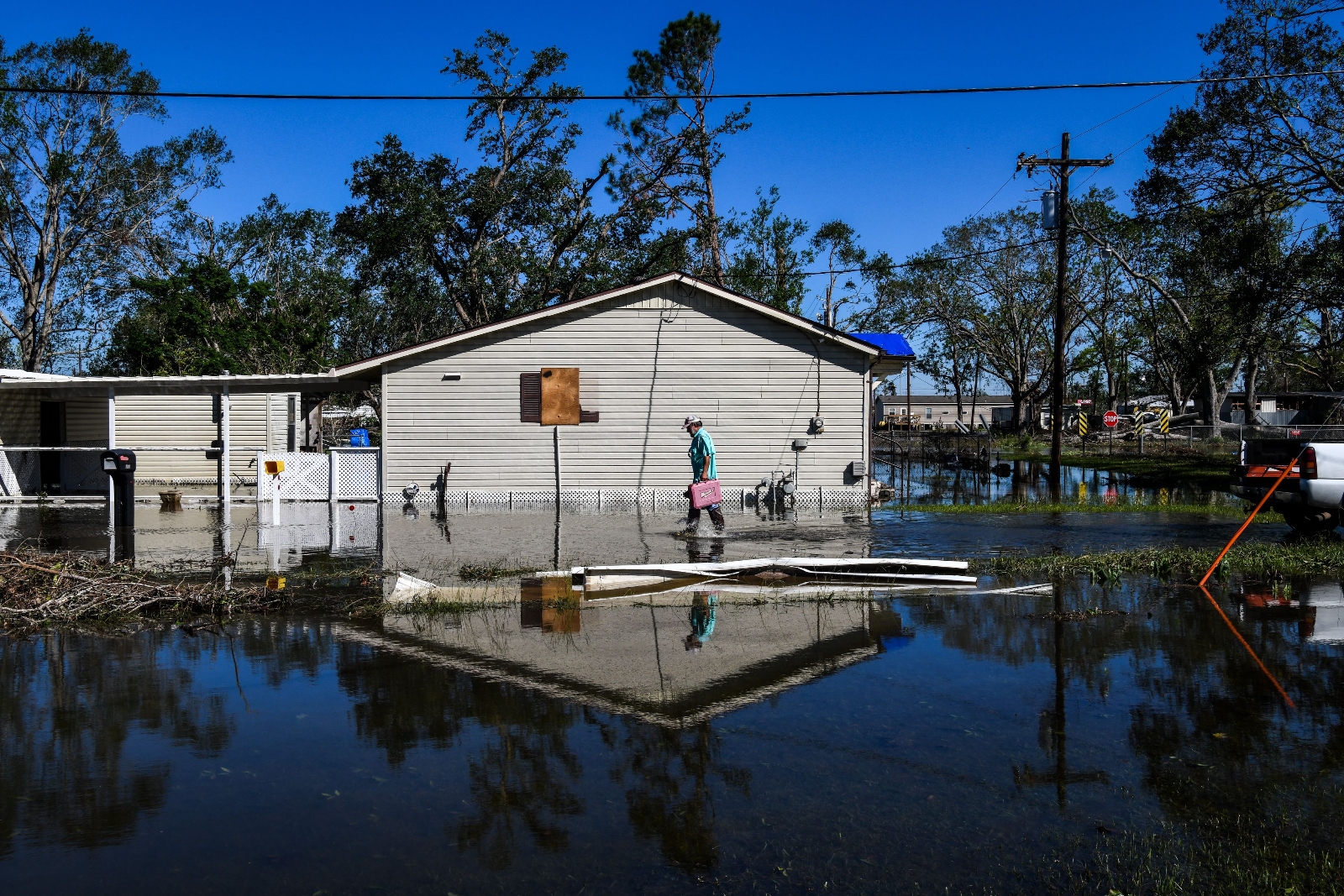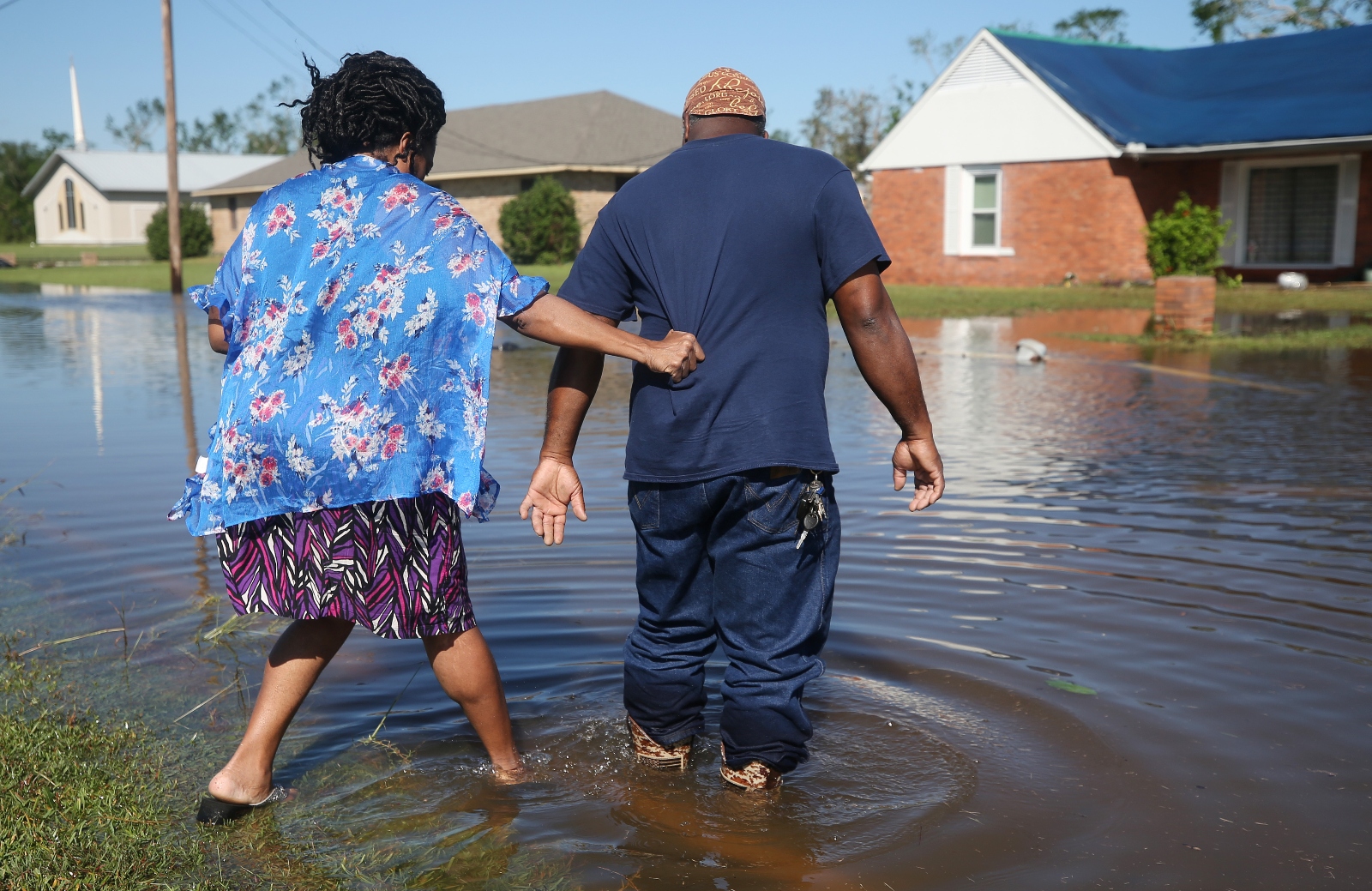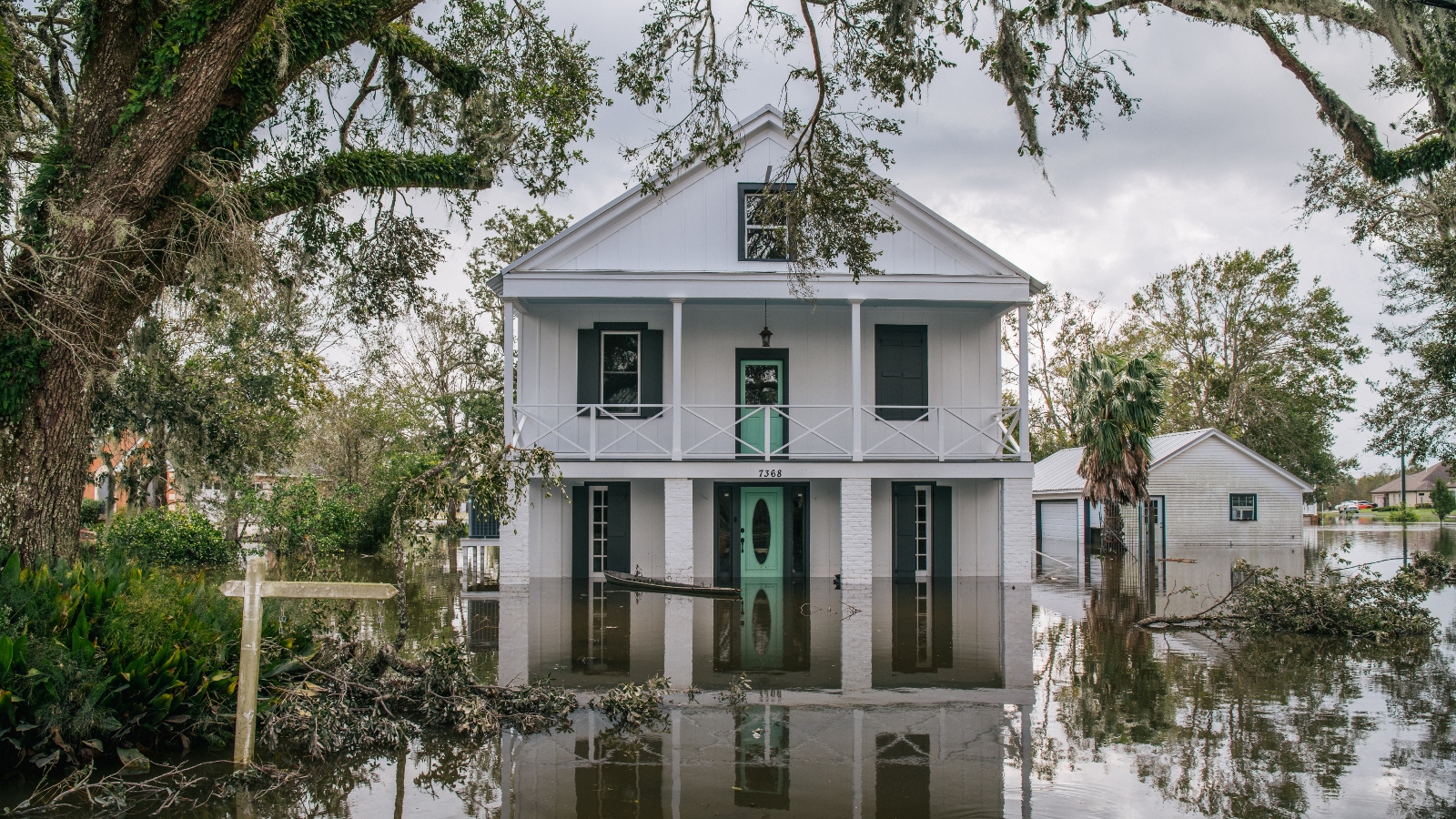The National Flood Insurance Program isn’t doing too well. The program, which offers public flood insurance to almost 5 million households nationwide, is about $20 billion in debt, and it lost tens of thousands of customers last year after debuting a new system for calculating risk. To make matters worse, the Federal Emergency Management Agency’s legal authorization to run the insurance program will expire on Saturday amid a broader fight in Congress over federal spending. At that point, policies will start to lapse at the end of their term, leaving thousands of people without flood coverage during the tail end of hurricane season.
As expiration looms, FEMA is facing not one but two lawsuits over the program. The lawsuits take aim at the program from opposite directions: A case brought by Louisiana officials and a group of Republican state attorneys general argues that the agency’s new risk estimates have raised flood insurance prices too high, and a case brought by a group of Oregon environmentalists argues that the agency is keeping prices too low.
The contradictory allegations underscore the need for careful policymaking around flood insurance. If the agency raises flood insurance rates, it could inflict economic devastation on floodplain homeowners, but if it keeps premiums low, it will enable continued development in flood-prone areas, ensuring huge future losses.
“Nobody wants to pay a lot for insurance, and as risks are going up from climate change, we are really stuck with this question of who’s going to pay for that increasing risk,” said Carolyn Kousky, the associate vice president for economics and policy at the Environmental Defense Fund and an expert on disaster insurance.
The original purpose of the NFIP was to discourage people from living in flood-prone areas, but it has failed at this for decades. The law requires most homeowners in floodplains to purchase insurance from the program, but these homeowners pay rates that are often far too low to reflect the risk they face. These low prices have encouraged developers in cities like Houston to build thousands of homes near rivers and coastlines, and they have also plunged the program into debt.
FEMA can’t change the program’s pricing system without help from Congress, but lawmakers have dodged the issue for years, wary of blowback from coastal homeowners. In the absence of legislative action, FEMA tried to fix the program back in 2021 by updating its system for calculating flood danger. The new system, which the agency calls Risk Rating 2.0, incorporates more data about flood dynamics and home elevations into a complex algorithm. It’s a big upgrade from the agency’s previous system, which was developed before modern computing.
The new system has lowered prices for about 20 percent of NFIP customers, but it’s also led to massive rate increases for coastal homeowners who had been paying subsidized prices in states like Florida and Louisiana. In some jurisdictions, such as Louisiana’s Plaquemines Parish, the average flood insurance premium has risen by more than 1,000 percent. These premium hikes have drawn protests from both sides of the aisle.

The backlash over these price increases has triggered a multistate lawsuit over Risk Rating 2.0. A group of 10 Republican-controlled states and 43 Louisiana parishes sued in June to stop the system, asking a federal judge to cancel it. They’re also demanding that FEMA release more information about its new risk model, which they say relies on “undisclosed, hypothetical, and abstract possibilities.”
In their initial complaint against the agency, the plaintiffs claimed that the housing market in their states and parishes will take a nosedive if the program remains in effect.
Risk Rating 2.0 “will depress property values, particularly in areas where flood insurance is required,” they wrote. “High insurance rates will also discourage individuals from purchasing property” in the affected states, they claimed. “Fewer residents lead to a reduction in … tax base, resulting in lower tax revenue and hampering the [states’] ability to invest in future mitigation projects.”
Meanwhile, the environmental groups in Oregon argue that flood insurance rates are still too low. In their complaint, filed earlier this month, the groups wrote that the NFIP’s affordability mandate has incentivized hazardous development by charging households artificially low premiums that don’t reflect their true risk. This development, they argue, jeopardizes the survival of threatened and endangered species that rely on the floodplains for habitat.
“The program has encouraged floodplain development in high-hazard areas by providing insurance policies that obscure risk to property owners and provide taxpayer-subsidized, discounted coverage,” the groups alleged.
The new lawsuit follows in the footsteps of previous litigation in Oregon. Another coalition of environmental groups in the state sued FEMA back in 2009, arguing that real estate development in floodplains threatened the survival of several endangered marine species, including steelhead salmon and the orcas that feed on them. The National Fish and Wildlife Service endorsed that view, and FEMA agreed to set more restrictions for development in Oregon floodplains, but the new plaintiffs say the agency is slow-walking those changes.
If both lawsuits succeeded, they would push the NFIP in contrary directions: The Louisiana case would force FEMA to offer flood insurance at lower rates, making it cheaper to live in floodplains, while the Oregon case would force FEMA to stop offering coverage in floodplains that would impact vulnerable fish species. The Oregon plaintiffs have been successful before, but legal experts told Grist that the Republican attorneys general will have a hard time prevailing against Risk Rating 2.0. FEMA is required by law to charge fair and accurate rates for flood insurance, and the NFIP’s previous, outdated risk assessment created serious problems on both counts.
“My general impression is that they’re just throwing stuff at the wall to see if anything sticks,” said Daniel Farber, a law professor at the University of California, Berkeley, of the Louisiana case.
FEMA has moved to dismiss the Risk Rating 2.0 lawsuit, saying that the plaintiffs “wrongly ask the court to upend the status quo…simply because some policyholders in their states and communities are now paying higher premiums.”

Even so, the dual litigation highlights FEMA’s position between a rock and a hard place. The National Flood Insurance Program has failed for decades to discourage development in floodplains, as evidenced by the Oregon case, and FEMA’s attempts to fix the program have caused enormous economic pain to homeowners in coastal areas, as evidenced by the Louisiana case.
Thousands of these homeowners have dropped their insurance since Risk Rating 2.0 rolled out, fleeing to cheaper private programs with more selective risk pools, and this has left the NFIP in even worse financial straits. With declining enrollment, the program will take in even less revenue from premiums, which will likely increase its debt load over the coming years. Meanwhile, the policyholders that remain in the program will likely see their property values fall as a result of their gargantuan insurance rates.
Kousky says Congress could ease the transition to Risk Rating 2.0 by passing a law that would calibrate insurance premiums to household income. This would make flood coverage affordable for low-income households while charging high premiums to wealthy owners of seaside mansions. But if lawmakers won’t act, she says, homeowners in Louisiana and other flood-prone states will have no choice but to swallow a bitter pill.
“If you keep the cost of living in high-risk areas artificially low, and you encourage development in these places, then eventually there’s gonna be a big disaster,” she said. “And that’s going to be way more economically costly.”



